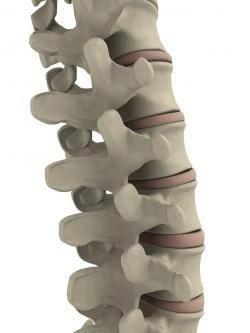Scoliosis, a condition which affects the spine, is thought to affect as much as 5% of the population. People with scoliosis have abnormal side-to-side spinal curves, which can vary widely in degree and severity. The condition is most likely to be found in children and adolescents, and is generally more common in females. However, people of any age and gender can develop scoliosis.

Common signs and symptoms of scoliosis include:
- A back that looks curved or asymmetrical
- Uneven shoulders
- Altered leg lengths
Many children with scoliosis complain of pain in the back and hips at rest or during sporting activities, including gymnastics, soccer, and tennis.
Contrary to popular belief, scoliosis is not always visible to the naked eye. Someone with scoliosis may appear to have a completely "normal" posture. Even though small curves may be unnoticeable, however, they can still cause pain in the back, hips, or shoulders.
The most severe cases of scoliosis may impair a person's breathing and ability to move around.
How is scoliosis diagnosed?
Most children are screened for scoliosis in school by a nurse or other appropriate professional. Very often, a chiropractor is the first healthcare professional to identify scoliosis, since doctors of chiropractic are frequently consulted when someone begins to experience back pain. If scoliosis is suspected, a doctor typically is able to make a full diagnosis by taking X-rays, spinal measurements, and a thorough patient examination and history.
What are the causes of scoliosis?
The exact cause of scoliosis is unknown. It may be hereditary in some cases, since it often runs in families. Scoliosis may develop temporarily in children who are experiencing growth spurts (this type of "non-structural" scoliosis is usually more responsive to treatment). Other potential causes of scoliosis include injury, birth defect, infection, or illness. These causes typically lead to "structural" or fixed scoliosis, which may be less correctable with treatment.
What kinds of treatments are available for scoliosis?
Many individual factors affect what kind of treatments are appropriate for scoliosis, including the age of the patient, the type of scoliosis, and the severity of the spinal curves. Severe cases often require surgical intervention or serial bracing. Less severe cases, however, may respond to more conservative treatment. This can include:
- Chiropractic therapy, including manual adjustments, therapeutic exercise, electrical stimulation, and postural screening and correction.
- Acupuncture and MassageTherapy, to promote pain-relief, anti-inflammation, and soft and deep tissue relaxation.
- Rehabilitation, including lifestyle and nutritional counseling to help a person maintain a healthy weight, diet, and self-image.
It's important to remember that scoliosis can't always be "cured." But even if these treatment methods do not "correct" the abnormal curves, they can still drastically improve a person's quality of life by reducing pain and improving functional activity tolerance.
Do you or a loved one have scoliosis and are looking for help?
Contact Back & Neck Care Chiropractic & Sports Massage at (360) 253-6674 today to meet with our friendly staff and schedule an appointment. We have treated patients with scoliosis from Vancouver, Cascade Park, Fishers Landing, Orchards, Salmon Creek, and Camas, WA and nearby Portland, OR.

